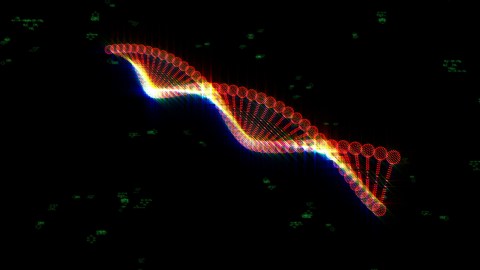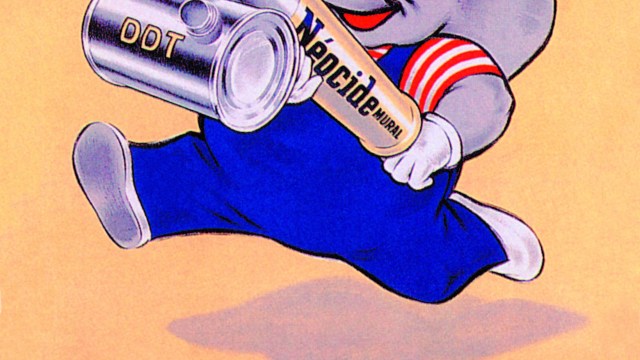Mutation in ‘junk DNA’ behind several deadly cancers

Shutterstock
- Only about 2 percent of the human genome codes for proteins; the rest is called noncoding DNA.
- We used to think this portion of the genome served almost no purpose. Now, however, we have learned that it performs several important biological functions, though much of it is still unknown. This lack of insight is why it’s sometimes referred to as the “dark matter” of the human genome.
- In two studies, researchers from Ontario discovered a mutation in this genetic dark matter that changes how gene products are spliced, potentially resulting in several different kinds of cancer.
The human genome contains over 3 billion base pairs, combining together to form at least 20,000 genes. And yet, we tend to focus most of our attentions on just 2 percent of the genome. This is a fairly reasonable thing to do — this two percent is responsible for nearly all of the daily activity in our bodies. It’s the portion of the genome made up of what is known as coding DNA, so-called because it codes for proteins. In the body, proteins perform most of the work, like functioning as enzymes, serving as antibodies, or providing structure and support. On the larger scale, they make up the structure of the body’s organs and tissues and allow the body to move.
But another 98 percent of the genome doesn’t encode for these critical ingredients to life. It’s often referred to as noncoding DNA. We used to think this DNA was completely useless, which explains its earlier name, “junk DNA.” Now, we know that although it doesn’t code for proteins, it can play a crucial role in regulating the various processes of life.
There is, however, still a lot that we do not understand about noncoding DNA, so it is sometimes referred to by a third name: the “dark matter” of the human genome.
A single typo leading to “hundreds of mutant proteins”
In two recentstudies, Ontario-based researchers discovered a mutation within this genomic dark matter that was responsible for causing a wide variety of cancers. “By carefully analyzing these regions,” said Dr. Lincoln Stein, co-lead to both of the studies, “we have discovered a change in one letter of the DNA code that can drive multiple types of cancer. In turn, we’ve found a new cancer mechanism that we can target to tackle the disease.”
“We’ve found that with one ‘typo’ in the DNA code, the resultant cancers have hundreds of mutant proteins that we might be able to target using currently available immunotherapies,” added Dr. Michael Taylor, the other study lead.
This typo was located on the U1 gene. This gene does not code for a protein, and thus counts among the genome’s noncoding DNA. This is unusual, since nearly every mutation that causes cancer exists in the coding portion of DNA. That’s why Stein was skeptical when Taylor brought him data that implicated the U1 mutation in brain cancers. “I didn’t believe it for a second that this was a real finding,” said Stein. “I thought it was an instrumentation error. But I thought it was interesting enough to try to either confirm or disprove.”
But after conducting an analysis of nearly 3,000 other genomes, the researchers discovered that the same mutation was showing up in a wide variety of cancers. While U1 doesn’t code for proteins, it does code for the U1 small nuclear RNA (U1 snRNA). This forms part of what’s known as the spliceosome. The spliceosome functions as a kind of processing plant for gene products called messenger RNA (mRNA), which carry the genetic blueprints needed to build proteins.
U1 snRNA binds to these products, indicating where they need to be “spliced,” or where they carry unnecessary information that should be cut off. However, the mutation these researchers identified changes where U1 snRNA binds to these gene products. In turn, this changes how numerous genes are transcribed, many of which can result in cancer.
While by itself this serves an exciting discovery that may help us identify new ways to treat cancers, it also underscores just how little we really understand about the most fundamental parts of our bodies. In the past, we thought that most noncoding DNA was completely useless. Instead, it was hiding part of the answer to what was the cause of numerous cancers.





